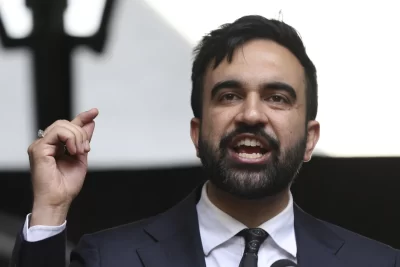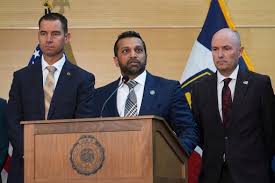
NEW YORK — Above a bodega in New York City’s Harlem neighborhood, a mosque congregation hosts iftar, the traditional Islamic end of fast meal, for hundreds of hungry migrants every night during this holy month of Ramadan.
Up north in the Bronx, an imam has turned the two-story brick residence that houses his mosque into a makeshift overnight shelter for migrants, many of them men from his native Senegal.
Islamic institutions in the Big Apple are struggling to keep up with the needs of the city’s migrant population as an increasing number of asylum seekers come from Muslim-majority African countries. The challenge has become all the more pronounced during Ramadan, which began March 11 and ends April 9.
Many mosques have opened their doors to migrants during the daylight hours, becoming de facto day centers where new arrivals can find a quiet place to rest and recover, oftentimes following restless nights sleeping on the streets or in the subway.
Muslim leaders say they’ve stepped up their appeals for donations of money, food, clothing and other supplies in recent days.
“We’re doing what we can do, but we can’t do everything. That’s the bottom line,” said Moussa Sanogo, assistant imam at the Masjid Aqsa-Salam in Harlem, just north of Central Park. “These brothers, they don’t eat enough. They’re starving when they get here. Can you imagine? Starving. In America.”
His utility bills have long since outpaced his ability to pay. He estimates he’s behind about $7,000 on the home’s electricity service and another $11,000 on water service.
“In our culture, you can’t deny the people who come to the mosque,” he said on a recent Friday as more than 50 men arrived for afternoon prayers. “We keep receiving the people because they have nowhere to go. If they come, they stay. We do what we can to feed them, to help them.”
The latest migrant surge has seen more than 185,000 asylum seekers arrive in New York City since the spring of 2022, with Africans from majority Muslim nations such as Senegal, Guinea and Mauritania among the top nationalities represented in new cases in federal immigration courts in the state.
New York City’s estimated 275 mosques were among the first places to feel the impact of the African wave, as they’re often migrants’ first stop upon arriving in the city, said Assefash Makonnen, of African Communities Together, a Harlem-based advocacy group supporting African immigrants.
But relying solely on the generosity of faith-based communities — many of which are already struggling to keep afloat — isn’t sustainable in the long run, she said.
Last summer, Democratic Mayor Eric Adams announced to fanfare a program meant to provide funding, security and other support for up to 75 mosques, churches and synagogues that agreed to provide overnight shelter to migrants.
So far, though, just six houses of worship holding around 100 beds have been approved to provide additional space for the more than 64,000 migrants currently housed by the city in hotels and other shelters.
Bishop Matthew Heyd of the Episcopal Diocese of New York said the challenge for many faith-based institutions is that they’re located in older buildings that don’t meet current fire safety standards.
With more “commonsense” regulations, he said, houses of worship are prepared to provide 5,000 additional beds for migrants at a fraction of the cost the city is currently paying to shelter migrants in hotels across the five boroughs.
“We want to be part of the solution to this. We have been before, and can be now,” Heyd said, referring to a network of faith-based shelters that grew in response to the city’s homeless crisis in the 1980s.
Adams spokesperson Kayla Mamelak said the city, in response to the concerns, lowered the maximum number of beds permitted at faith-based shelters earlier this year from 19 to 15, meaning they wouldn’t be required to have sprinkler systems under city building codes.




